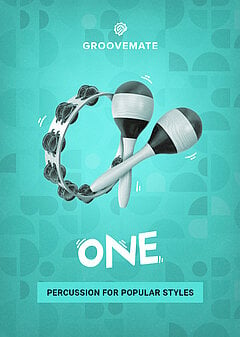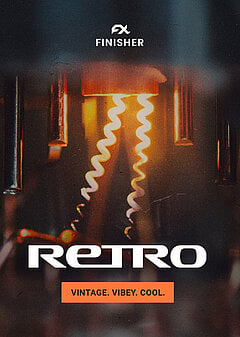How to Make a Type Beat
Discover how to quickly analyze any reference track and produce, mix and master a beat in any style or genre you choose
JUNE 13TH, 2021
Why write a type beat?
Before starting, get clear on what you want to accomplish. Do you want to sell your type beats to other producers? Learn to emulate any style you choose so you can get more client work writing for other artists? Master another producer’s style in and out so you can incorporate it into your own music?
There are infinite possibilities, and the answer should help determine what types of type beats to focus on, whether you want to go narrow or diverse, and how many type beats you need to create to hit your initial goals.
Common type beats
In a more general sense, the focus of type beats is largely on modern-day trap music. If you can create a trap type beat, other styles will come more easily, as you’re often working with similar samples and rhythms. The kick, snare, hi hats and bass all need to be super tight, and it’s often the added instruments that change the character of the sound (vocals, world instruments, synth leads, piano vs. synths for chords, anything) — so nailing those core sounds will help you master the rest! For a more in-depth guide to contemporary trap, check out our article, How to Produce Pop Trap.
From there, maybe you want to create an old school hip hop beat. While the samples, rhythm, and riffs will change in ways that are beyond the scope of this article, there is one easy change that will make your life much easier: adding classic filtering and saturation to mimic the quality of vinyl records. Finisher RETRO is a quick way to emulate this sound in a single plugin, rather than creating complex effect chains and adjusting tons of different settings individually. Regardless of the tools you use, it’s a good idea to spread this across the entire mix, perhaps on each instrument group (or just one on the master if you can still preserve the sound).
Oftentimes, producers will focus on recreating the sound of a particular artist or rapper. While the techniques for each will of course have significant differences, often you’ll find a few things they almost always do: throw in a short guitar riff, use a synth kick but a live snare, use string bass vs. synth bass, etc. There’s a ton you can do to make this process easier, and we’re going to touch upon it in the next section.
Analyze the style
When you want to create a professional and accurate type beat, you want to stack the odds in your favor as much as possible — and that means learning a style inside and out. For a Drake type beat, listen to his most popular songs (i.e. what people associate with his music) multiple times before recording a single note. Same deal with lofi, old school hip hop, and hyper-specific styles like samurai trap (yes, this is a real thing!). Pay attention to the chord progressions, beats, samples, instrumentation, mix, sound design, everything. The wider a variety of songs in a specific style you listen to, the more varied your ideas will be and the easier the entire process will become. Let’s look deeper into how to listen analytically.
Chord progressions are fairly straightforward compared to other aspects of a song — with enough ear training and practice, you’ll be able to reproduce them at will. The trickier part is how you’ll change them. You can often get away with directly copying chord progressions (just look at the top 40 pop songs in the US over the past couple decades), but it’s a good habit to always make at least some changes. A Young Thug type beat should sound like the artist, but not a particular song — if it’s obvious which exact song it’s based on, it’s too close to the original. However, changing a chord here and there is often enough to strike the perfect balance, so with a little practice you can easily get there.
Drum beats are tougher, though; the rhythm is usually easy enough, but the actual drum samples are critical. It’s typically not tough to find sample packs geared toward emulating specific styles and producers though, and you can get even closer by using a more flexible tool like UJAM’s Beatmakers; for many type beats, especially trap, GLORY is an excellent one to start with. Pick a song you like in your chosen type beat style, then place and adjust the right samples in the rhythm you’re looking for. To make this process easier, you can even strip the audio from the song and add it to your session at a low volume to make sure your drum beat’s rhythm and samples lock into the one you’re emulating. Lower that volume even further over time until it can stand on its own, then try changing it around to make it a little different from the reference song.
Dissect the mix and use reference tracks
Trying to emulate an entire mix’s style is daunting when you think of all its different components simultaneously, so you’ll want to break it down into different effect types and modifications: compression, EQ, distortion, delay, reverb, saturation and any other categories you care to add. When you’re listening to your reference songs, spend some time getting a feel for the frequency balance, punchiness, how aggressive the distortion and saturation are, how much reverb is used and on what instruments, and any other details which strike you as important. You don’t need to take thorough notes (unless you choose to) — the details will sink in over time, and you’ll want to listen to your references while working anyway.
Once you begin actively working on your type beat, drag roughly 3 reference tracks into your DAW session, making sure they’re not being routed to any effects that could affect their sound. Flick back and forth between your references and your type beat as you progress — if you’re off track, it’s far better to find out early. Just remember that you won’t be able to get the mix exactly right until you’re at the mastering phase, so get as close as you can without stressing too much. Spectrum analyzers are a great tool for comparing your type beats with your reference songs, particularly if you’re not fully confident in using your ear just yet. Voxengo has a free analyzer, and they’re also present in many EQs.
Creating your type beat
It’s time to lay it down! If you’re not sure where to start, go with the drum beat and percussion, focusing first on the kick, snare and hi hats. Check out our companion articles The Ultimate Guide to Percussion and How to Mix a Beat to get you up and running even faster.
Get the core beat working well, but only do enough mixing to get the beat fairly tight; polish will come later. Move onto the chords next to keep building up the foundation, add as many layers as you need, then keep moving. Create a bassline or simply use the root note of the chords (some type beats rely heavily on a unique bassline, so if this is true for your chosen style, don’t skip it!).
Generally, you should move on from each section before you get caught in the loop of perfectionism and endless tweaking. It’s easy to create extra work for yourself with type beats, because they can be deceptively simple compared with creating a full track — you typically don’t need to include melody, vocals, or a ton of instruments and synth layers. After all, if you add too much, it ceases to be a type beat and turns into a full song!
Check your type beat against your reference mixes frequently to prevent any unpleasant surprises, making adjustments as you go. Then once everything’s in the session, the true mixing phase will be much easier. Once you’ve gotten it as close as you can, before you start mixing in circles, export the track, pull it into a new session and master it with a tool like iZotope’s excellent Ozone suite. Then boom, you’re ready to publish!
Wrapping up
Type beats are an excellent way to rapidly improve at emulating other producers and styles — and if you’re industrious enough, it’s possible to sell a lot of them as a side hustle! Beyond the obvious applications of selling your beats and improving your overall production skills, type beats can also be an excellent gateway into well-paid client work with artists, other producers, and perhaps even video game soundtracks.
The ability to listen to a collection of songs and create a soundalike is invaluable — plus, there are tools (like UJAM’s Beatmakers designed) to help you create beats in virtually any genre faster than ever. With enough practice and the right tools, any producer can learn to create authentic type beats that perfectly capture a chosen style of music. So gather your reference tracks, listen to them inside out, pull them into your session and get producing!
Stay up to date
Sign up and we’ll send you an e-mail with product news and helpful stuff every now and then. You may unsubscribe at any time.
Defy Limits
We develop software solutions that enable people to create, consume and interact with music.



